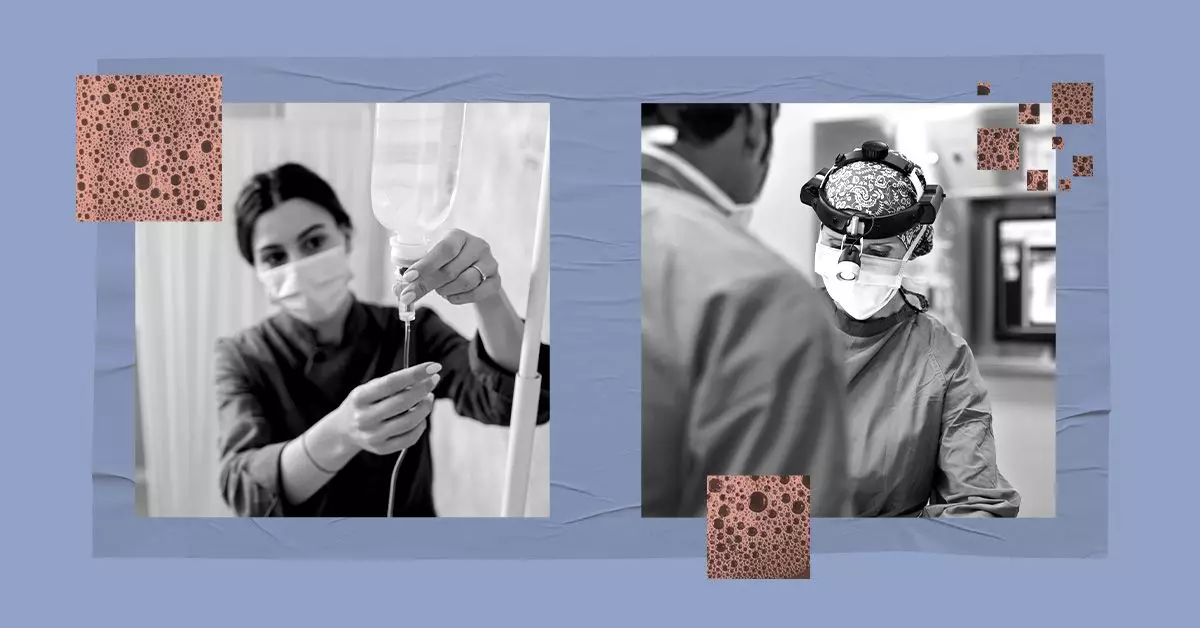Ewing sarcoma, a rare and aggressive form of cancer, poses significant challenges for affected individuals and medical professionals alike. Primarily developing in the bones or surrounding soft tissues such as cartilage and nerves, this malignancy predominantly affects children, adolescents, and young adults. Given its aggressive nature, effective treatment necessitates a highly coordinated, multidisciplinary approach tailored to the unique circumstances of each patient. This article delves into the complexities of Ewing sarcoma treatment, highlighting various strategies from chemotherapy to stem cell transplants.
Ewing sarcoma is characterized by its rapid growth and tendency to metastasize—spread to other parts of the body. Typically, the treatment protocols deployed hinge on the cancer’s stage, tumor size, location, and any existing metastases. As the disease can vary significantly among individuals, oncologists must meticulously assess each patient’s scenario to determine the best therapeutic options available. The overarching goals of treatment include eradicating malignant cells, preserving functionality in the affected areas, and minimizing both short-term and long-term complications associated with aggressive treatments.
For patients with localized Ewing sarcoma, where the cancer is confined to its primary site and nearby tissues, the initial treatment regimen often includes a combination of chemotherapy, surgery, and radiation therapy.
– **Chemotherapy** serves as a cornerstone in managing Ewing sarcoma. The objective here is to shrink the primary tumor and address undetected cancerous cells that may have dispersed throughout the body. Standard chemotherapy regimens, such as VAC/IE or VDC/IE, comprise potent drugs including vincristine, doxorubicin, cyclophosphamide, ifosfamide, and etoposide. Administered in cycles over several months, close monitoring is vital throughout this process to manage side effects effectively.
– **Surgery** becomes pivotal when it comes to tumor removal. Ideally, surgeons aim for “limb-sparing” techniques that permit the extraction of the tumor while preserving the function and appearance of the affected limb. However, the feasibility of such approaches hinges on various factors: tumor size, location, and response to preceding chemotherapy. In cases where the tumor cannot be removed surgically, radiation therapy may be employed as a critical component to eradicate remaining cancer cells.
When Ewing sarcoma metastasizes—spreading to the lungs, other bones, or bone marrow—the treatment paradigm shifts. Here, systemic therapies are key.
– **Systemic chemotherapy** is typically the first line of treatment for metastatic cases, aiming to control the systemic disease by targeting cancer cells throughout the body.
– **Surgery and radiation therapy** may be utilized strategically to manage specific metastatic sites. Furthermore, in select cases, high-dose chemotherapy followed by stem cell transplant provides a potential opportunity for improved outcomes, particularly in extensive disease scenarios. This aggressive approach, although risky, offers a lifeline for individuals whose cancer has proven resistant to conventional treatments.
For patients facing recurrent Ewing sarcoma, the treatment options depend largely on the recurrence’s location and behavior. Typically, the plan is multifaceted and may include systemic chemotherapy for widespread recurrence, localized surgery, or radiation therapy to target localized relapses. Additionally, participation in clinical trials allows patients access to novel therapies and innovative approaches that could redefine their treatment landscape.
The journey with Ewing sarcoma extends beyond aggressive treatment modes. Survivors often face myriad challenges, including significant physical side effects like fatigue, hair loss, and weakened immunity, alongside psychological repercussions requiring emotional support. Addressing these multifactorial issues is essential to improve overall quality of life.
Resources such as psychological counseling, support groups, and rehabilitation services aim to guide patients and their families through emotional and practical hurdles. Financial assistance programs may also alleviate some of the burdens tied to the costs of ongoing treatment. For many, reaching out to organizations like the American Cancer Society can facilitate the necessary support and information.
Managing Ewing sarcoma necessitates a multifaceted, patient-centric approach that intertwines various treatment methods, from chemotherapy and surgery to cutting-edge clinical trials. The objective is clear: achieving the best possible outcomes while ensuring the preservation of functionality and minimizing long-term complications. Continuous advances in research and treatment methodologies promise new avenues of hope for those affected. Navigating this complex and often daunting landscape underscores the critical role of cohesive teamwork among healthcare professionals, patients, and support networks. In the world of Ewing sarcoma, knowledge, planning, and resilience pave the road toward a brighter future.


Leave a Reply